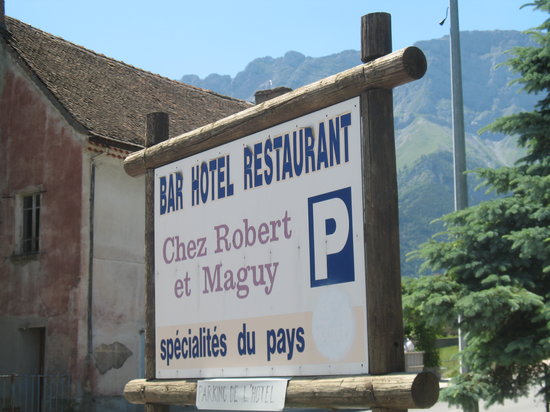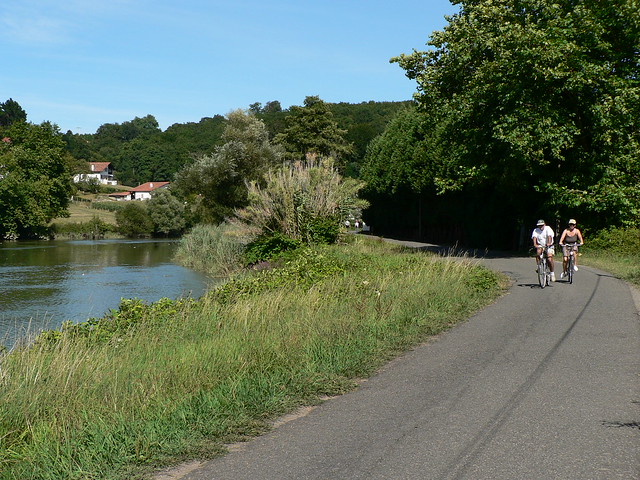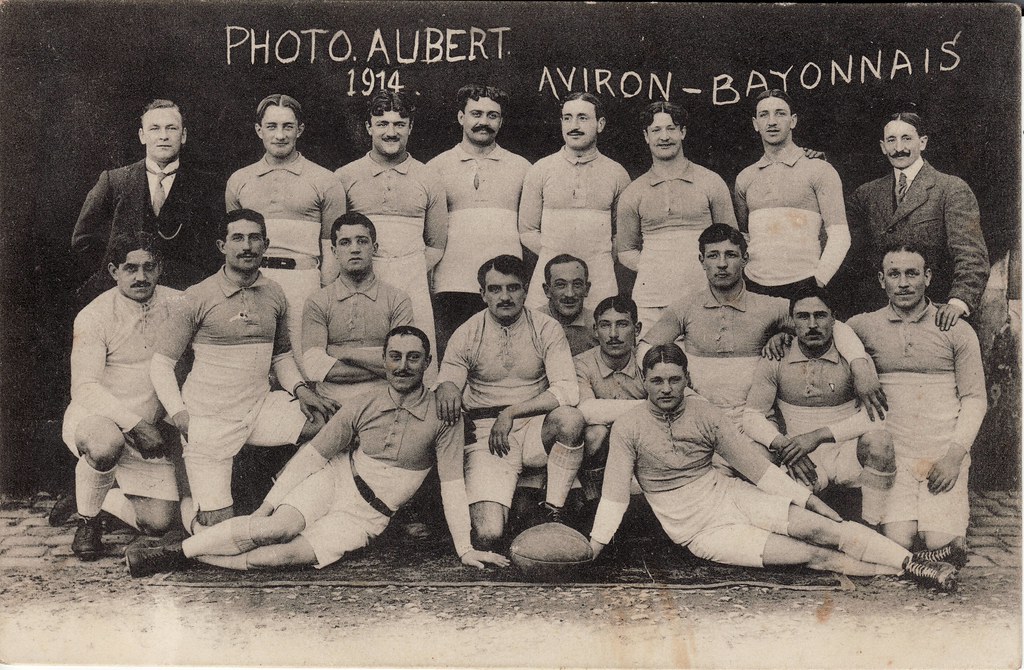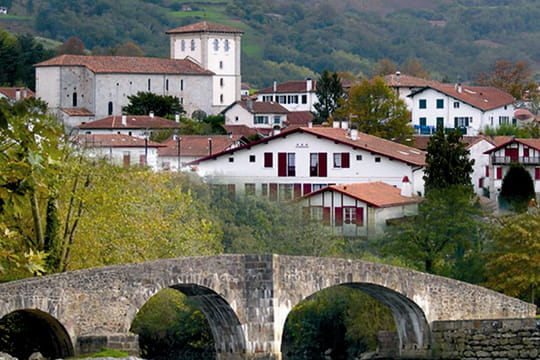 Sadly, this is where I have to say we were disappointed. Not by the friendly welcome, the personal service, the impeccable table setting or the comfort - no - of all things it was the food. There's been a creeping malaise in French restaurants over the last few years and that is the ever-more prevalent practice of buying-in pre-prepared meals. Running a restaurant in France today has become increasingly expensive - taxes, staff costs, cost of produce - such that many restaurateurs are having to cut corners wherever they can to maintain their prices at a reasonable level. We've noticed that where an affordably-priced restaurant features a comprehensive multi-choice menu, it's almost a given that they are using pre-prepared meals bought in from a company like Brake (I'm ashamed to admit that it's a British company*). Every meal we had at the hotel had that familiar reheated appearance and taste of institutional food. So now, if you see a Brake's delivery van parked outside a restaurant that you were planning to visit, you know what steps to take.. (Whoever said, "Bloody great big ones!" would be right!)
Sadly, this is where I have to say we were disappointed. Not by the friendly welcome, the personal service, the impeccable table setting or the comfort - no - of all things it was the food. There's been a creeping malaise in French restaurants over the last few years and that is the ever-more prevalent practice of buying-in pre-prepared meals. Running a restaurant in France today has become increasingly expensive - taxes, staff costs, cost of produce - such that many restaurateurs are having to cut corners wherever they can to maintain their prices at a reasonable level. We've noticed that where an affordably-priced restaurant features a comprehensive multi-choice menu, it's almost a given that they are using pre-prepared meals bought in from a company like Brake (I'm ashamed to admit that it's a British company*). Every meal we had at the hotel had that familiar reheated appearance and taste of institutional food. So now, if you see a Brake's delivery van parked outside a restaurant that you were planning to visit, you know what steps to take.. (Whoever said, "Bloody great big ones!" would be right!)
* (Edited to add: The American food giant Sysco completed a $3.1bn takeover of Brake in 2016.)
Traditionally, one of the great pleasures of travelling within France has always been the opportunity to sample the different regional specialities - which was why we were disappointed to be offered these anonymous products from a food factory kitchen. A depressing subject. I'm reluctant to name the hotel because we gave the hotel top marks in every other respect.
 |
| Moustiers |
 Over the next few days we explored the local area - starting with Moustiers (right) which is rightly famous for its faïence pottery. It would be fair to say that I don't usually wax lyrical about pottery shops but the Bondil shop caught our eye with its range of stunningly original hand-painted designs that featured, among others, 18th century hot air balloons (Montgolfières) - & no two designs were alike. However, all this came at prices that would make even a banker wince.. (3 figures for a plate for example).
Over the next few days we explored the local area - starting with Moustiers (right) which is rightly famous for its faïence pottery. It would be fair to say that I don't usually wax lyrical about pottery shops but the Bondil shop caught our eye with its range of stunningly original hand-painted designs that featured, among others, 18th century hot air balloons (Montgolfières) - & no two designs were alike. However, all this came at prices that would make even a banker wince.. (3 figures for a plate for example). The lady in the Bondil shop had spent some time in Sheffield (UK) of all places and was very chatty. She was only too pleased to provide us with the full fascinating history of faïence pottery but despite this and the undeniable temptations of the shop we left empty handed. (Definitely somewhere to visit following a major Lottery win). After this, we wandered around Moustiers' picturesque streets, where the dog was happy to discover the pleasure of quenching his thirst in one of the many preserved traditional lavoires we found in the region.
The lady in the Bondil shop had spent some time in Sheffield (UK) of all places and was very chatty. She was only too pleased to provide us with the full fascinating history of faïence pottery but despite this and the undeniable temptations of the shop we left empty handed. (Definitely somewhere to visit following a major Lottery win). After this, we wandered around Moustiers' picturesque streets, where the dog was happy to discover the pleasure of quenching his thirst in one of the many preserved traditional lavoires we found in the region.The jewel in the crown of the region is unquestionably the Gorges du Verdon.. (apologies for this jerky link). The Gorges du Verdon is a spectacular natural phenomenon that, if I'm anything to go by, few people have heard of. Second in size only to the Grand Canyon, the Gorges du Verdon is over 20 kilometres long and, at its widest, is 1.5 kilometres across. In some places the canyon is 700 metres deep. It was only in 1905 that a French caver led an expedition through the gorge for the first time. The trip took a little less than four days and the expedition concluded that the area was definitely inaccessible to humans.
 |
| Gorge du Verdon |
However, the situation has changed somewhat since those days. Today, there are two roads along the top of the gorge with numerous lookouts - such as Point Sublime, La Palud sur Verdon and Pont de Lártuby - for visitors to gaze at the wonderful rock formations and glittering emerald green waters far down below. There are several footpaths that take you to the banks of the rivers. The sheer scale of it all took our breath away.
The cliffs were pockmarked by ancient caves where troglodytes had once lived. If living in a cave ever becomes a lifestyle choice again, then I can't imagine a better place for it. It looked to my unexpert eye that the limpid green waters below would be well stocked with fish.
We reached a lake and the dog explored the full range of possibilities open to him. Living by the sea-side, it was a novelty for him to be able to drink the water. He stood up to his shoulders in it staring into the middle distance with a happy expression, with water draining from his chops..
The trail had been marked with a very occasional stripe of yellow paint on a rock or a tree - far less intrusive than enamel signs and pathways bordered by fencing. We could have got lost if we'd tried hard enough - which really gave the impression of being out in Nature, as opposed to being corralled.
 After a few hours we were back in the village and the dog was dry again. We headed off back to the hotel past fields that were planted with row upon hypnotic row of lavender for the perfume industry - the classic postcard image of Provence.
After a few hours we were back in the village and the dog was dry again. We headed off back to the hotel past fields that were planted with row upon hypnotic row of lavender for the perfume industry - the classic postcard image of Provence.
At the hotel, we changed into swimming things and headed down to the swimming pool. It was here that the pooch learnt a valuable lesson in life.
He's always been used to entering water - ie, the sea - via the shallow end.. Taking one look at the inviting waters of the pool, he suddenly threw himself into it with a wild frenzied leap - only to discover that it was about 4 feet deep! After a depth charge-like entry splash, he erupted from the depths with eyes like dinner plates! Not all dogs can swim instinctively it appears. He was vertical in the water flailing at it with his front paws and making no headway. Madame managed to grab hold of him before any damage was done and pulled him out.. He won't do that again! Luckily no-one else was about.
He's always been used to entering water - ie, the sea - via the shallow end.. Taking one look at the inviting waters of the pool, he suddenly threw himself into it with a wild frenzied leap - only to discover that it was about 4 feet deep! After a depth charge-like entry splash, he erupted from the depths with eyes like dinner plates! Not all dogs can swim instinctively it appears. He was vertical in the water flailing at it with his front paws and making no headway. Madame managed to grab hold of him before any damage was done and pulled him out.. He won't do that again! Luckily no-one else was about.
 Another day we headed south to Cotignac, a photogenic village with a open air market. It turned out to be an impossibly attractive and archetypal Provençal village and, perhaps predictably, it was full of northern Europeans. We walked by market stalls laden with the local produce - cheeses, wines, spices, charcuterie, countless varieties of honey, bread, fruit and veg of course and then the olives, nuts, tapenades etc etc. It was like a cornucopia of everything we like..
Another day we headed south to Cotignac, a photogenic village with a open air market. It turned out to be an impossibly attractive and archetypal Provençal village and, perhaps predictably, it was full of northern Europeans. We walked by market stalls laden with the local produce - cheeses, wines, spices, charcuterie, countless varieties of honey, bread, fruit and veg of course and then the olives, nuts, tapenades etc etc. It was like a cornucopia of everything we like..All too soon it was time to leave Provence and head north for the Jura. We set off and came across the delightful small town of Gréoux-les-Bains. Unfortunately we didn't have time to stop and explore - that will have to wait for another time - but it's in the book!
This song by Françoise Hardy came up on the radio as we were leaving the Haute Provence via winding hill roads - this catchy ever-so-French 60s record seemed to capture the mood of the Provençal landscape perfectly.. All legs and cheekbones, Françoise epitomised French cool in the 60s for many (well, for me really!)
As the sun rose high in the sky, we started casting around for somewhere to stop for lunch. After days of eating reheated dinners, we wanted some real food. South of Grenoble, we spotted a roadside
restaurant with a few ubiquitous white vans parked outside: Chez Robert et Maguy at Chauffayer (Haute-Alpes). A mother and son
operation, she looked after the tables while the son cooked. The restaurant was minimally decorated - all their effort clearly went into the food.. The
choice was either soup or soup - followed by filet mignon or faux filet with
gratin-dauphinois & green salad.. We ordered 2 faux filets. The steaks were rare and tender and the gratin was deliciously
home-made.. some cheese was eased down with a small carafe of red. Coffee. This
was the kind of food we'd been looking for.. How much? Think there were a few
euros change out of 30€. Aah.. that was more like it. Highly recommended.
 |
| Baume-les-Messieurs |
Terrine maison à
l’aspérule odorante et figues, brioche maison aux cèpes,
crudités de saison à
l’huile de noisettes
Quenelles de
carpe maison à la reine des prés
Gateau tiède au
chocolat, sauce caramel, glace vanille
artisanale et craquelin au pralin
As it was a treat, we had a bottle of Vin d'Arbois red.. which was excellent too. In fact, we brought some home with us.
I've had quenelles de brochet before but never carp.. One of the best lunches we've had.. and if you're ever in the vicinity, treat yourself. It's one of those memorable experiences that come around all too seldom.
Edited to add: I've just read that it closed in September 2014. Great shame..
We also visited nearby Château-Chalon (officially one of the most beautiful villages in France) - a splendid hilltop village perched up on the cliffs overlooking the vineyards that produce the very special Vin Jaune (yellow wine) that this region is famous for. Apparently it's illegal in the US..(?)
Edited to add: I've just read that it closed in September 2014. Great shame..
We also visited nearby Château-Chalon (officially one of the most beautiful villages in France) - a splendid hilltop village perched up on the cliffs overlooking the vineyards that produce the very special Vin Jaune (yellow wine) that this region is famous for. Apparently it's illegal in the US..(?)
Here's a long & interesting video about Vin Jaune:
| Tête de veau |
Finally, together with some relatives who lived locally, we went out for lunch at a nearby restaurant. I spotted tête de veau (calf's head) on the menu. This is one of those legendary French dishes that could easily be used as a nationality test.. (eat it - and you're in.) I read somewhere that it's Jacques Chirac's favourite (he cannot be serious!).
I decided the time had come to take the plunge so I ordered it as my starter. I have a rule that I don't normally eat food that moves or wobbles. When the waitress brought the first courses out I fixed my plate with a beady eye as it seemed to be wobbling - in fact, it was wobbling. Tête de veau is normally served with a sauce gribiche. My dish seemed to be composed largely of square chunks of a nameless gelatinous substance that were each a good ½ inch thick with a few strands of meat attached. I ate the meat and was unable to proceed any further - despite much vocal encouragement! The waitress very kindly let me off the hook and offered me a replacement starter instead. No prizes for guessing how I answered that one. In self-defence, mine didn't have anything like the amount of meat as shown in the photo above. As I said to someone, this dish would be OK in wartime.. and best eaten during a blackout!
Here, you can see how the dish is prepared - not recommended for readers of a nervous disposition!
 Saturday, 16th June 2012. Down to the river this morning for a hot & sweaty outing in a mixed VIII. Not having rowed for a few weeks, for a variety of reasons, my hands quickly blistered up, but a few more outings should harden them off again.. It was so humid out on the river that my ears were dripping! I got up at 6am to paint a new door for the cellar before the temp started climbing. Just finished fitting the door with new handles before putting it back in place. I have to say that French door hinges (above right) are brilliant.. To remove a door, all you do is take hold of it and lift straight up.. and off she comes. Re-fitting it is simplicity itself.. a 5 second job. Just locate the upper part of the hinge over the lower and jiggle the door around until all three hinges are lined up and bingo! Door hinges in the UK are still the prehistoric variety (above left) - at least they are to my knowledge. Removing a door in the UK was always a fiddle.
Saturday, 16th June 2012. Down to the river this morning for a hot & sweaty outing in a mixed VIII. Not having rowed for a few weeks, for a variety of reasons, my hands quickly blistered up, but a few more outings should harden them off again.. It was so humid out on the river that my ears were dripping! I got up at 6am to paint a new door for the cellar before the temp started climbing. Just finished fitting the door with new handles before putting it back in place. I have to say that French door hinges (above right) are brilliant.. To remove a door, all you do is take hold of it and lift straight up.. and off she comes. Re-fitting it is simplicity itself.. a 5 second job. Just locate the upper part of the hinge over the lower and jiggle the door around until all three hinges are lined up and bingo! Door hinges in the UK are still the prehistoric variety (above left) - at least they are to my knowledge. Removing a door in the UK was always a fiddle.
Can't remember if I've featured this clip before - it will give your French a good work-out.. Jean-Luc Petitrenaud (TV foodie) goes to Biarritz..
I decided the time had come to take the plunge so I ordered it as my starter. I have a rule that I don't normally eat food that moves or wobbles. When the waitress brought the first courses out I fixed my plate with a beady eye as it seemed to be wobbling - in fact, it was wobbling. Tête de veau is normally served with a sauce gribiche. My dish seemed to be composed largely of square chunks of a nameless gelatinous substance that were each a good ½ inch thick with a few strands of meat attached. I ate the meat and was unable to proceed any further - despite much vocal encouragement! The waitress very kindly let me off the hook and offered me a replacement starter instead. No prizes for guessing how I answered that one. In self-defence, mine didn't have anything like the amount of meat as shown in the photo above. As I said to someone, this dish would be OK in wartime.. and best eaten during a blackout!
Here, you can see how the dish is prepared - not recommended for readers of a nervous disposition!
 Saturday, 16th June 2012. Down to the river this morning for a hot & sweaty outing in a mixed VIII. Not having rowed for a few weeks, for a variety of reasons, my hands quickly blistered up, but a few more outings should harden them off again.. It was so humid out on the river that my ears were dripping! I got up at 6am to paint a new door for the cellar before the temp started climbing. Just finished fitting the door with new handles before putting it back in place. I have to say that French door hinges (above right) are brilliant.. To remove a door, all you do is take hold of it and lift straight up.. and off she comes. Re-fitting it is simplicity itself.. a 5 second job. Just locate the upper part of the hinge over the lower and jiggle the door around until all three hinges are lined up and bingo! Door hinges in the UK are still the prehistoric variety (above left) - at least they are to my knowledge. Removing a door in the UK was always a fiddle.
Saturday, 16th June 2012. Down to the river this morning for a hot & sweaty outing in a mixed VIII. Not having rowed for a few weeks, for a variety of reasons, my hands quickly blistered up, but a few more outings should harden them off again.. It was so humid out on the river that my ears were dripping! I got up at 6am to paint a new door for the cellar before the temp started climbing. Just finished fitting the door with new handles before putting it back in place. I have to say that French door hinges (above right) are brilliant.. To remove a door, all you do is take hold of it and lift straight up.. and off she comes. Re-fitting it is simplicity itself.. a 5 second job. Just locate the upper part of the hinge over the lower and jiggle the door around until all three hinges are lined up and bingo! Door hinges in the UK are still the prehistoric variety (above left) - at least they are to my knowledge. Removing a door in the UK was always a fiddle. Can't remember if I've featured this clip before - it will give your French a good work-out.. Jean-Luc Petitrenaud (TV foodie) goes to Biarritz..
21st June 2012. The weather hasn't settled yet for the summer - on Tuesday it was only 15° or so. We went to Irun in Spain yesterday - it's no more than 20-30 mins from here - and the town was clearly readying itself for the Fêtes de la Saint Marcial (which takes place from 27th June - 1st July) as most of the shop windows were full of red and white. The car said it was 32½C as we headed back into France around lunchtime. At that point we decided to turn off and stop at the Buvette de la Halle at Saint-Jean-de-Luz for a spot of lunch. We managed to find a table in the shade - phew - it was hot there.
Today's all set to be another hot one!
23rd June 2012. Another hot morning on the river today - I had an outing in a mixed coxless IV and we made progress after a shaky start. For some reason, the boat wanted to turn to the left all the time - but despite that we had an enjoyable sortie. Did a sweaty 16km and when we returned, the 'responsable' decided it would be a good day for an apéro.. (never knowingly refused!)
If you've never been to Paris, here's a reminder of the greatest city in the world. There's nowhere else quite like it - so if you haven't been - what are you waiting for? If you're married with kids - park them with the in-laws and go - just the two of you. It's one of the very few cities that, even if you visited it every year for the rest of your life, has the power to remain endlessly fascinating. You'll thank me for this!
Today's all set to be another hot one!
23rd June 2012. Another hot morning on the river today - I had an outing in a mixed coxless IV and we made progress after a shaky start. For some reason, the boat wanted to turn to the left all the time - but despite that we had an enjoyable sortie. Did a sweaty 16km and when we returned, the 'responsable' decided it would be a good day for an apéro.. (never knowingly refused!)
If you've never been to Paris, here's a reminder of the greatest city in the world. There's nowhere else quite like it - so if you haven't been - what are you waiting for? If you're married with kids - park them with the in-laws and go - just the two of you. It's one of the very few cities that, even if you visited it every year for the rest of your life, has the power to remain endlessly fascinating. You'll thank me for this!
Find a little restaurant somewhere.. and then who knows what might happen..
































